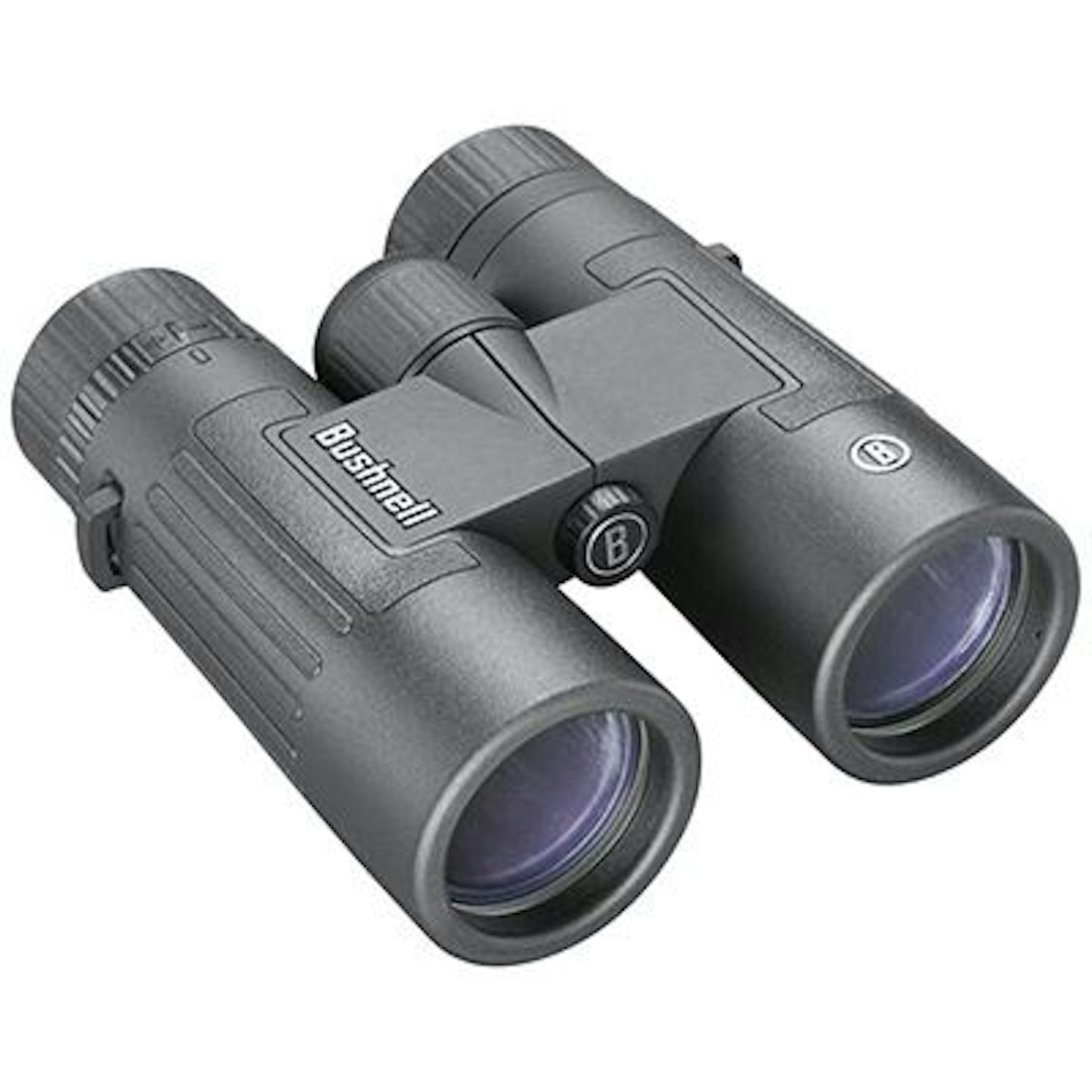Bushnell has a higher profile on the other side of the Atlantic than it does here. Their binocular range is extensive and includes the Legend E, L and M series. Each of these is available as an 8x42 or 10x42. I took delivery of a box of three – a 10x42 Legend E, L and M, to compare them to each other. They all have some features in common, and some differences – which are reflected in the price. Could I see much difference between them? Is it worth the extra outlay to get the M?
The E is the entry-level option, with an RRP of £310. The most expensive is the M, at £495, and in between is the L, at £375. All have a magnesium chassis and water-repellent lens-coating, are made with lead-free glass, and have fully multi-coated optics. So what are the differences?
E, L OR M?
The E and the L are a similar size and weight (635g and 638g respectively). The M is noticeably longer and heavier, at 722g. Unlike the other two, the M is an open-bridge design. There are optical differences, too. The L and the M include some ED glass – the E doesn’t. The M also has di-electric prism coating – this should get a bit more light through the binocular – so the image should be brighter.

HANDLING AND MECHANICS
All handle well. The L has shallow thumb indents on the underside, lacking on the E, and smoother ‘grip-panels’ on the sides. The open-bridge M has slightly deeper thumb indents than the L, and is still pretty light for a 10x42 – it’s well balanced, too. They are all waterproof, and build quality is good. The L and M have a locking dioptre ring – the E doesn’t. That need not be an issue but mine moved too easily and I wasn’t convinced it adjusted like it should.
The twist-up eyecups have two intermediate positions on the E and L, but only one on the M. The action on the L was looser than on the others but I don’t think it would be an issue. Eye-relief varies – becoming more and more generous as the price increases. All should have enough for glasses wearers, but try it out to make sure.
Focusing is very similar on the E and L. The wheel is 1.5 fingers deep, moves anti-clockwise towards infinity, reasonably smoothly and moderately stiffly, with between 1.5 and 1.75 turns. It’s different on the M. It’s a bigger wheel – two fingers deep – which moves very smoothly, with more resistance, perhaps a little too much. There is the same number of turns, but in the opposite direction.
OPTICAL PERFORMANCE
You’d expect any optical differences to be most obvious in poor light, but that wasn’t my experience. My ‘beyond sunset’ test took place in early March until 45 minutes after sunset, by which time it was pretty dark. All did OK, even at the end, though there may have been some minor differences.
But I could see some difference in good light. To cut to the chase, the M is the best. It’s the most expensive, with the best spec, so you’d expect it to be and it is. The E is perfectly functional, but suffered from colour fringing more than the others. The view through the L is easier on the eye than the E, but the M is the best. Sharpness is good on the E, but better on the L and the M.
Brightness was good on all three, with, in good light, the M a tad brighter than the others. There was no obvious colour cast on any, but colour fringing was more of an issue on the
E than the L, and better again on the M. I had to search a bit for best focus at distance on the E, and perhaps slightly so with the M, but not the L. All have the same field of view, an impressive 6.5 degrees, and in theory, all have the same close-focus of 1.9m, but don’t believe everything you read!
I measured the L at a bit under 1.9m, the M at 1.99m, but close-focus on the E approached 2.5m, much less respectable. So, if close-focus is important to you – check it out.
VERDICT
The price difference between the E and the L isn’t massive – so go for the L or, if the extra bulk, weight and price of the M isn’t a deal-breaker, that’s the one I’d recommend.
E: A good view, but with a bit of colour fringing. No ED glass. ‘Traditional’ roof-prism design, lightweight. Dioptre doesn’t lock and not sure it worked that well. Close-focus not as good as quoted. Two intermediate eye-cup positions, less eye-relief than the others. £310.
L: A better view than the E, with less colour fringing. ED glass. ‘Traditional’ roof-prism design, lightweight. Locking dioptre. Two intermediate eye-cup positions. More eye-relief than E, less than M. £375.
M: The best view of the bunch. ED glass and di-electric prism coating. Open-bridge design, bigger and heavier, but still reasonably light. Locking dioptre. One intermediate eye-cup position. More eye-relief than the others. Bigger focusing wheel which focuses in the opposite direction. £495.
.jpeg?ar=16%3A9&fit=crop&crop=top&auto=format&w=1440&q=80)
